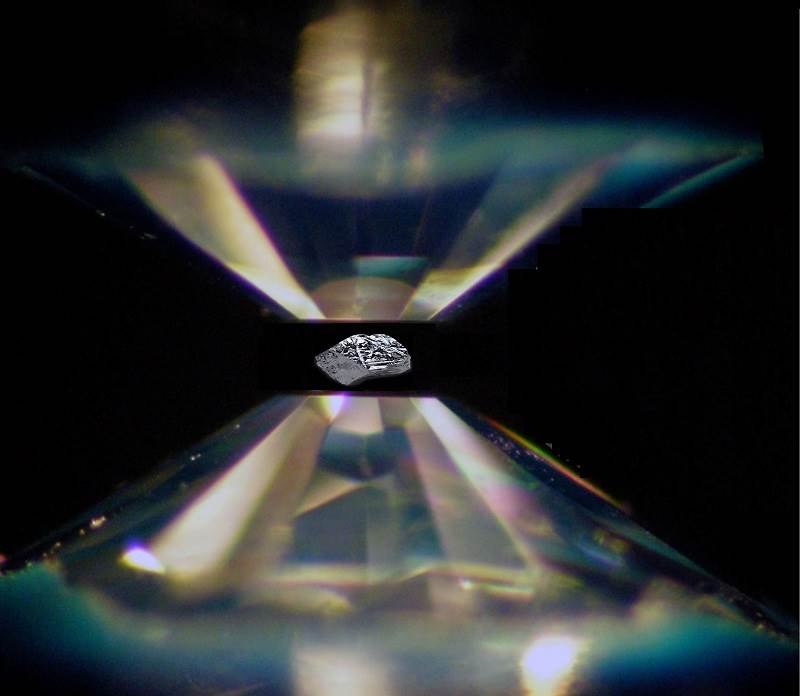Sep 16 2020
In the past few years, considerable efforts have been made to analyze the melting curve of elements at elevated pressure.
 A microscopic-sized sample of Niobium between two diamonds. Image Credit: Asociación Ruvid.
A microscopic-sized sample of Niobium between two diamonds. Image Credit: Asociación Ruvid.
This is a relevant data, for instance, for applications such as nuclear fission reactors involving very high pressures or very high temperatures, or to gain a deeper understanding of the interior of planets.
Knowing what happens to iron—and to other transition metals, such as niobium—in the Earth’s interior is crucial for all geophysical models and paves the way to a more accurate global model for studying the interior of planets.
But fusion continues to be a challenging phase transition to define even with the most sophisticated experimental and theoretical techniques.
On the experimental side, achieving and quantifying temperatures of several thousand degrees and pressures of several million atmospheres is highly challenging. Conversely, achieving and detecting the time at which a dense material melts is also equally complicated.
Exploring niobium under high temperature and pressure demonstrates the efforts and issues in establishing the melting curves of metals.
An international group from France, the United Kingdom, the USA, and Spain—under the guidance of the Institute of Material Science (ICMUV) and led by scientist Daniel Errandonea from the Department of Applied Physics-ICMUV—has made significant advancements in the characterization of niobium up to pressures of 130 GPa (1.3 million atmospheres) and 5500 °K.
The team from the University of Valencia, also established by David Santamaría-Pérez –Ramón y Cajal researcher, has managed, along with its associates, to ascertain how the melting temperature of niobium relies on the applied pressure.
The analyses were performed by compressing a sample of microscopic-sized niobium between two diamonds and concurrently heating it with high-power infrared lasers.
To define the behavior of niobium under high temperature and pressure, a new technique was employed on the basis of a time-resolved characterization through high-intensity X-ray diffraction, produced by the synchrotron radiation source of the European Synchrotron Radiation Facility (ESRF) based in France.
These findings were integrated with the results obtained from shock wave experiments, produced by the effect of a projectile on the sample, and through computational simulations utilizing density functional theory (an alternative variational process to the solution of the Schrödinger equation) conducted on supercomputers at Los Alamos National Laboratory—part of the United States Department of Energy, administered by the University of California.
The study was published in the Nature Communications Materials journal.
On the Spanish side, the study was financially supported by MINECO and the Generalitat Valenciana (Prometeo EFIMAT).
Journal Reference:
Errandonea, D., et al. (2020) Experimental and theoretical confirmation of an orthorhombic phase transition in niobium at high pressure and temperature. Communications Materials. doi.org/10.1038/s43246-020-00058-2.